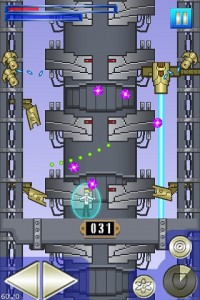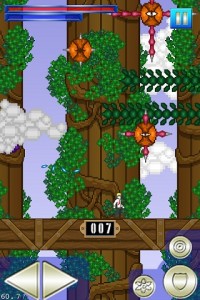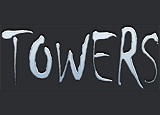 What led you to the mobile games industry, and what are some of the titles you’ve worked on so far? Have you always been attached to projects as an artist, or have you found yourself fulfilling other roles in addition?
What led you to the mobile games industry, and what are some of the titles you’ve worked on so far? Have you always been attached to projects as an artist, or have you found yourself fulfilling other roles in addition?
I’ve aspired to work in the games industry ever since I was a kid. For the longest time, I thought that my calling was writing code, but around college I found myself drawn more to art and game design. I started freelancing a bit, turning out some black and white art for indie tabletop RPG publishers. This eventually led to bigger gigs and contacts on Garage Games. I was attracted to the mobile games industry because of the immense opportunities I see for this technology. I think that a couple years from now, we will laugh at the idea of something like World of Warcraft being difficult to port to a smart phone.
As for previous titles, no job’s too big, no job is too small! I’ve been working with the guys behind an upcoming MMO called The Repopulation for about two years now. The latest iPhone project I’ve been on that’s currently published is called Stinky Kitty Slots — a simple but fun little slot machine game.
 Tell us a little about what your creative process is like as a pixel artist. Do you typically rough out designs as sketches before creating sprites and backgrounds, and do you find yourself using the latest tablets or relying on more old-fashioned techniques?
Tell us a little about what your creative process is like as a pixel artist. Do you typically rough out designs as sketches before creating sprites and backgrounds, and do you find yourself using the latest tablets or relying on more old-fashioned techniques?
I wouldn’t necessarily call myself a pixel artist. I like to work in a lot of different styles; I’m very eclectic by nature. But I love seeing a good game with a retro feel running on an iPhone, and thought that would be a great look for Towers. This may sound a little bizarre, but about 50% of my work happens in my head. I might spend half a day at a park, actively thinking about what I want a game asset to look like. It could take hours for me to settle on a rough idea of the design I want, but once I feel that I have a really exciting idea, creating the art is usually a breeze. I tend to shun tablets in general; I prefer working with older tools that give you more time to reflect.
Where did the inspiration for Towers come from? Did you ever have a more traditional bullet hell shooter in mind and it evolved into what it is now, or is the final product pretty close to what you envisioned going in?
Towers is an offspring of my first collaboration with Lightworx, a very deep space shooter/RPG hybrid. I drew up a pitch and had a lot of assets done for it, but we ended up expanding the project well beyond its original scope.
Towers is what happened when we decided to take a step back from that project. I was looking at bullet hell shooters and wondered if it might be interesting if, instead of blasting everything in your path, there was a turn-the-tables sort of mechanic where you could use the things you would normally want to avoid to your advantage. We hope to resume work on the original project shortly.
 When we think about game designers, I know I always have this vision of a programmer who has the concept and then seeks artists, so it’s interesting to see exactly the reverse situation in your case. Does the game development process go any differently when an artist is in charge, compared to projects where it’s someone from a programming background calling the shots and setting deadlines?
When we think about game designers, I know I always have this vision of a programmer who has the concept and then seeks artists, so it’s interesting to see exactly the reverse situation in your case. Does the game development process go any differently when an artist is in charge, compared to projects where it’s someone from a programming background calling the shots and setting deadlines?
Honestly, I don’t think it made a big difference. Art and programming are very different fields of expertise, and I think that if you want to end up with a well-designed game, great communication between an artist and a programmer is a must. As long as that happens, I don’t think it matters who’s heading the project.
Has Lightworx completed most of their development in cocos2d, or was that engine selected as something particularly suited to this project? And did you have a big role in that decision or pretty much leave it up to Lightworx once you had contracted with them?
Lightworx has a number of very different clients, so I think they work with a pretty wide variety of tools and engines. I left the decision-making process for how anything specific was to be programmed up to them as much as possible. The programmers who worked with me on Towers were very knowledgeable!
And finally, now that you’re approaching the finish line on Towers, what do you have in mind for the future?
I really enjoy both the art and design aspects of making games, so I hope there’s plenty of both in the years ahead! I’d like to continue development of the space-shooter/RPG hybrid I keep mentioning. I think the iPhone still has an enormous market for games with sweeping, well-written storylines, and at some point I would like to be the brains behind an app that delivers just that.
Our thanks goes to Michael Yatskar for taking out the time to answer our questions about Towers. It’s due to hit the App Store any day now; check out our hands-on preview in the meantime!


